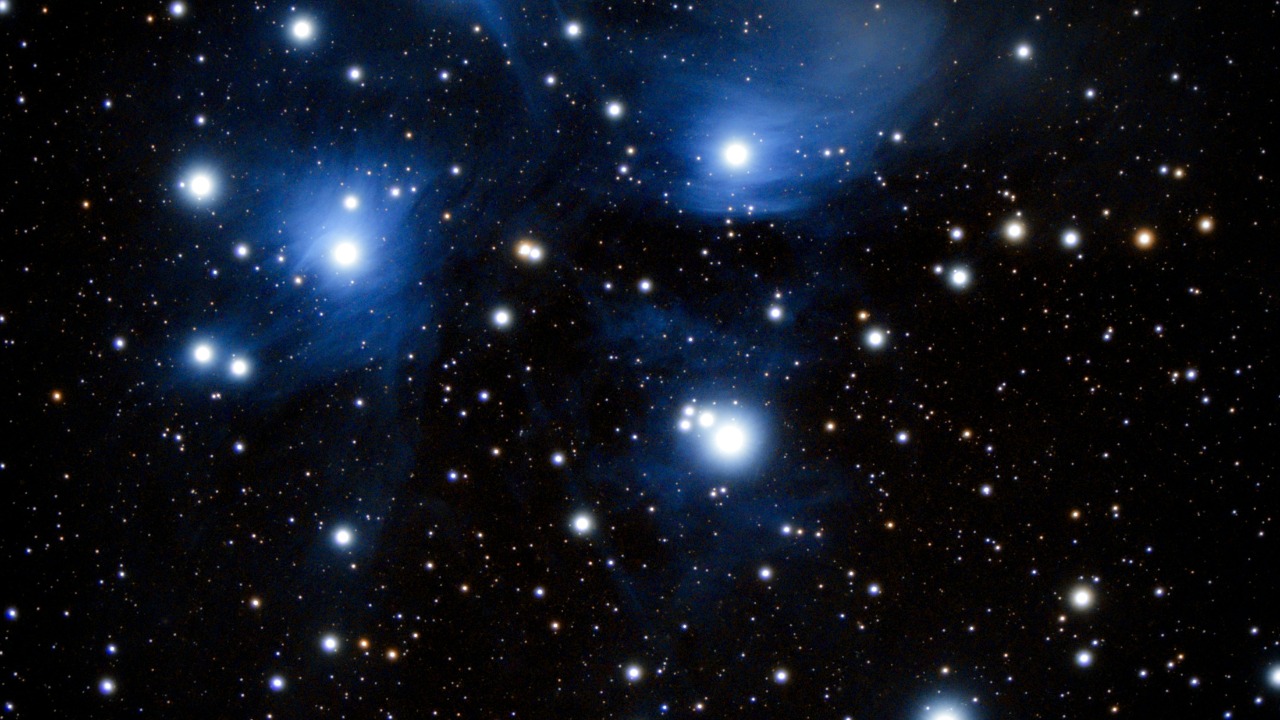
Astronomers have recently made a groundbreaking revelation about the Pleiades star cluster, also known as the Seven Sisters. This iconic celestial feature, visible from Earth, is now understood to be 20 times larger than previously estimated. This finding, based on advanced observations, expands the cluster’s known diameter from a compact group to a sprawling supercluster, prompting a reconsideration of its evolutionary timeline and structure.
Understanding the Pleiades Star Cluster
The Pleiades, a well-known open star cluster in the constellation Taurus, is often referred to as the Seven Sisters due to its seven bright stars visible to the naked eye. With an approximate age of around 100 million years, the cluster is composed of hot, blue stars formed from a single molecular cloud. This foundational astronomical knowledge has not changed with the new measurements, but it does provide context for understanding the significance of the recent discovery.
The Pleiades has held cultural significance across civilizations. In Greek mythology, for instance, it represents the seven sisters pursued by Orion. This enduring fascination with the Pleiades underscores the importance of the recent findings about its true size.
Historical Estimates of the Pleiades’ Size
Historically, the Pleiades’ diameter was estimated to be roughly 13 light-years. This measurement was based on early 20th-century observations that focused on the core bright stars. Surveys like the Hipparcos mission in the 1990s treated the cluster as a tightly bound group, without accounting for distant outskirts.
Ground-based telescopes had limitations in resolving faint, peripheral members of the cluster. This led to underestimations of the Pleiades’ size, as reported in standard astronomy texts up to the early 2020s.
The New Discovery: A 20-Fold Expansion
The key finding from recent astronomical analysis is that the Pleiades is 20 times larger than previously thought. The updated size extends to approximately 260 light-years across, redefining the cluster as a vast association rather than a dense core. This revelation, announced on November 14, 2025, in a report titled “Astronomers Unveil the True Size of the Pleiades, And It’s 20 Times Bigger Than You Ever Imagined”, marks a significant shift in our understanding of this celestial feature.
Methods Behind the Revised Measurements
The revised measurements of the Pleiades’ size were made possible by comprehensive data from modern surveys. The European Space Agency’s Gaia spacecraft provided precise positions and motions for over 1,000 stars in the Pleiades region. This data allowed astronomers to trace extended membership of the cluster.
Kinematic analysis was used to identify co-moving stars far from the core, confirming their gravitational ties despite the vast distances involved. Additionally, photometric and spectroscopic observations were integrated to filter true cluster members from foreground or background interlopers, ensuring the robustness of the 20 times larger extent.
Implications for Stellar Evolution
The expanded size of the Pleiades suggests that it formed from a larger initial cloud. This has implications for models of star formation in loose associations versus dense clusters. The dilute outer halo of the Pleiades may also lead to faster dispersal over millions of years due to galactic tidal forces, impacting our understanding of dynamical evolution.
These potential impacts were discussed in a report titled “The Seven Sisters Star Cluster Is 20 Times Larger Than We Thought” published on November 12, 2025. The report ties the finding to broader questions about the longevity and star retention of young clusters.
Observational Challenges and Future Prospects
Detecting faint outer stars of the Pleiades with traditional telescopes has been challenging. The full extent of the cluster was only uncovered with the precision offered by space-based instruments like Gaia. Looking ahead, studies using the James Webb Space Telescope are expected to probe dust and gas in the extended regions of the Pleiades, potentially revealing hidden star-forming activity.
This discovery could also refine distance measurements to the Pleiades, currently estimated at 440 light-years. Such refinement would aid in the calibration of measurements for more distant cosmic objects, further enhancing our understanding of the universe.
More from MorningOverview